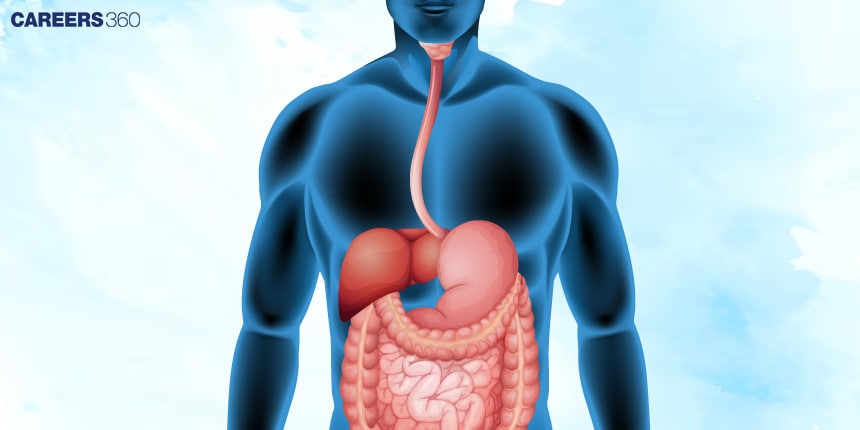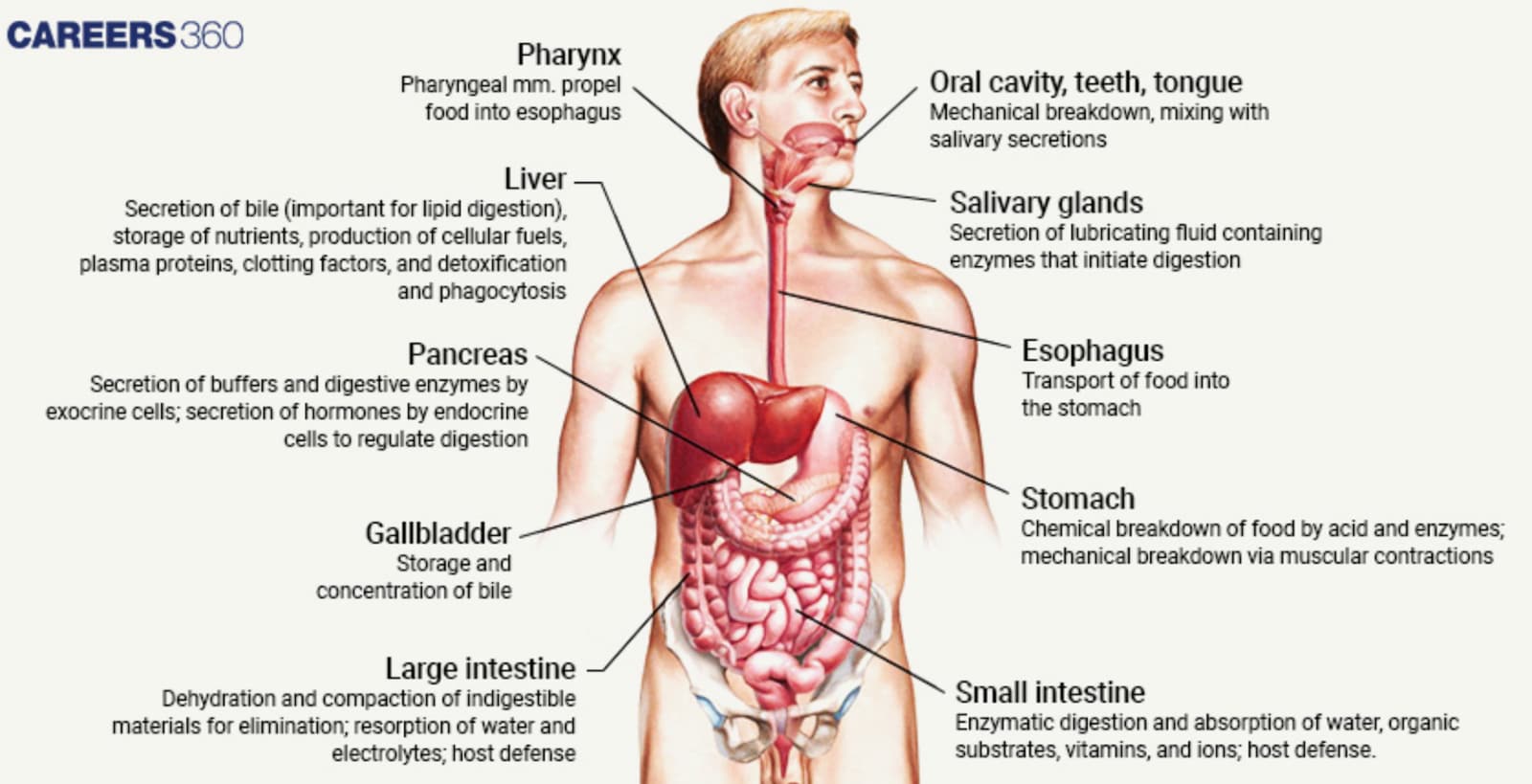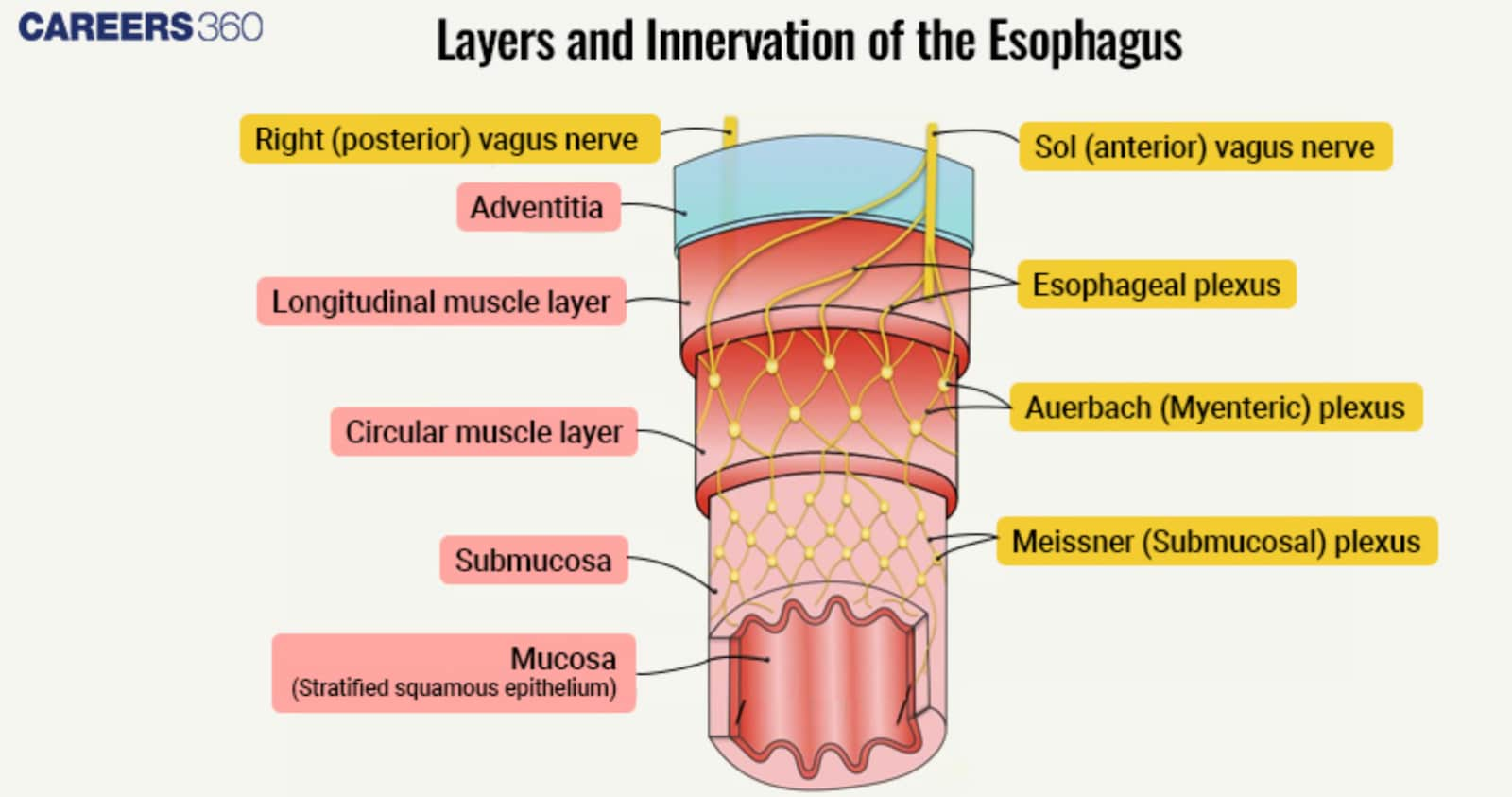Food Pipe/ oesophagus: Meaning, Parts, Anatomy, Function, Conditions
What Is Food Pipe?
The oesophagus is more commonly referred to as the food pipe. That body organ is an important component of our human digestive system, passing food from the throat down towards the stomach and eventually leading to the digestive process.
The vital anatomy of the oesophagus and the functions provided are quite imperative to understanding the way our human digestion system operates. It is a hollow, muscular tube lined internally by a mucous membrane. The oesophagus starts from the lower end of the pharynx and descends to the level of the stomach. It forms part of the upper gastrointestinal tract. It lies behind the trachea.
Don't Miss: Most scoring concepts for NEET | NEET papers with solutions
NEET 2025: Syllabus | PYQs | Crack NEET in 2 months - Study Plan
NEET Important PYQ & Solutions: Physics | Chemistry | Biology | NEET PYQ's (2015-24)


Layers of Food Pipe
The oesophagus consists of four well-defined layers:
Mucosa
The mucosa, the innermost layer, secretes mucus, which helps in lubrication during the passage of food while digestion is being carried out. This way, this layer is in direct contact with food and saves the oesophagus from friction caused by abrasive particles.
Submucosa
Directly under the mucosa is the submucosa, which consists of blood vessels and nerves. The submucosal layer consists of mucous glands that produce mucus. This layer supports the mucosa and, in return, it gives the blood supply to the mucosa.
Muscularis
There are further two kinds of muscles: circular and longitudinal. Both these combine to give peristaltic movements that move the ingested food down the oesophagus.
Adventitia
The outermost layer is the adventitia, composed of connective tissue. It anchors the oesophagus to surrounding structures in the neck and chest.
Functions Of Food Pipe
The oesophagus performs important functions, which include:
Transport of Food
The oesophagus is concerned mainly with the passage of food and liquids from the mouth down to the stomach. This passage is brought about through rhythmic peristalsis.
Protection
The oesophagus protects the digestion system from the materials in the stomach, as these are very strong and thus cause damage and pain when they flow back into the oesophagus.
Transport
The oesophagus transports all materials from the throat to the stomach and controls the flow of the materials in an organized manner.

Oesophageal Pathology–Oesophageal Cancer
The oesophagus can suffer from many diseases, but the most severe of all is oesophagal cancer.
Oesophageal Cancer
Oesophageal cancer is a malignant process that develops from the tissue of the oesophagus. Typical symptoms include difficulty swallowing, weight loss, chest pain and coughing. Treatment is based on the staging of the cancer and can include surgical methods, radiotherapy as well as chemotherapy.
Other Disorders
Other typical oesophageal disorders are:
GERD
GERD is a chronic condition where there is backflow of stomach acid to the oesophagus causing irritation and consequently discomfort.
Achalasia
Achalasia is a rare disorder wherein there is difficulty in passing food from the oesophagus into the stomach which leads one to have trouble swallowing food, among many other symptoms.
Esophagitis
Esophagitis is an inflammation of the oesophagus. Causes of it usually include acid reflux, infections, and even medications for some diseases and disorders.
Diagnostic Techniques
Several diagnostic modalities available in diagnosing oesophageal disorders include the following:
Endoscopy
A long, flexible tube with a camera on the end will then be passed into the oesophagus. It allows one to visualize the oesophagus for any abnormalities.
Barium Swallow
One will have to swallow a barium solution followed by an X-ray that will portray the form and condition of the oesophagus.
Manometry
Manometry measures muscular contractions of the oesophagus, their rhythm, and the regularity or irregularity to detect abnormal movements or functions.
Prevention And Care
A few practices need to be followed to keep the oesophagus healthy:
Healthy Habits
Avoiding smoking and unhealthy dietary habits, moderate use of liquor, and maintaining a healthy weight can help avoid disorders of the oesophagus.
Screenings
Regular follow-up medical checkups, with early diagnosis, are very important for the prevention as well as treatment of oesophagal diseases.
Medical Interventions
There are ample treatment options available to the patient who is suffering from oesophageal disorders, ranging from medicines and lifestyle changes; often, even surgery.
Recommended video for "Oesophagus"
Frequently Asked Questions (FAQs)
Food and liquids move from the mouth to the stomach through the oesophagus by peristaltic movements.
Peristalsis is rhythmic contractions of the oesophageal muscles that move food downward toward the stomach.
Difficulty in swallowing, weight loss, chest pain, and persistent coughing are some of the symptoms of oesophageal cancer.
Have a healthy diet, do not smoke, consume wine in moderation only, and see your doctor often for check-ups.
Tests which have been developed to investigate the disorders of the oesophagus include endoscopy, the barium swallow, and manometry.
Also Read
30 Nov'24 03:25 PM
26 Nov'24 05:38 PM
25 Nov'24 06:43 PM
25 Nov'24 05:45 PM
25 Nov'24 04:48 PM
25 Nov'24 03:52 PM
23 Nov'24 04:30 PM
23 Nov'24 10:03 AM